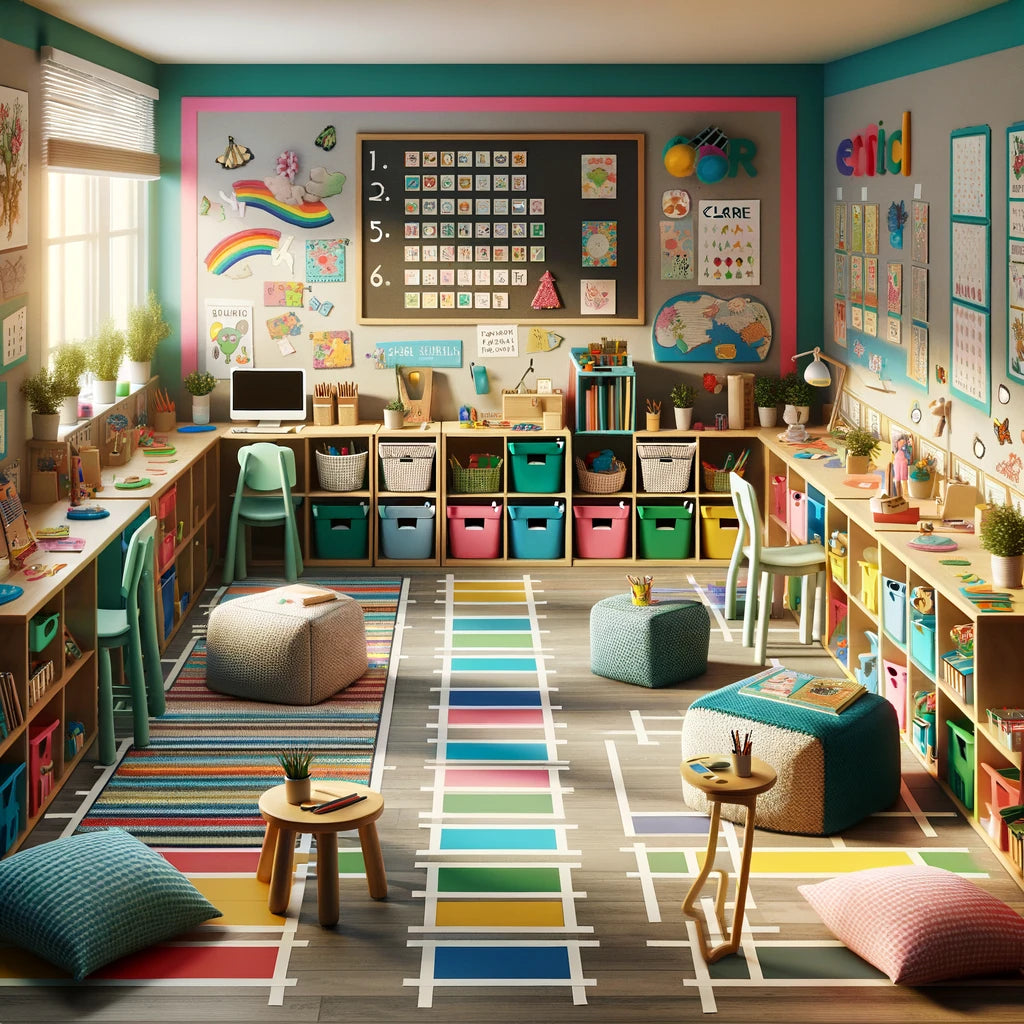Embarking on the journey of educating students with ADHD and Autism Spectrum Disorder (ASD) is like painting a unique masterpiece. Each stroke, each color choice, matters in creating an environment where these students can flourish. Let's dive into five transformative strategies that can turn any classroom into a haven of learning and discovery.
1. The Art of Minimalism: Streamlining the Classroom
- Clutter-Free Zones: Imagine a classroom where every toy and book has its own secret hideaway. Out of sight, out of mind, right? This helps in keeping focus sharp during crucial learning moments.
- Hidden Treasures: Use curtains or creative covers to keep those tempting bins and shelves out of view, making them magically appear only when it's time to use them.
- Scheduled Surprises: Have a clear timetable that unveils the day's activities, including when those hidden gems will come out to play.
2. Gallery of Focus: Simplifying Wall Decor
- Artistic Haven: Instead of turning the classroom walls into a kaleidoscope, why not have a dedicated art corner? A bulletin board outside the room could become the gallery for all creative endeavors, keeping the rest of the space serene and distraction-free.
3. Zoning for Success: Clearly Defined Areas
- Tape Magic: Use colorful tape, rugs, or dividers to mark different zones like reading nooks or computer corners. It's like having a map that guides students through an adventure in learning!
- Visual Signposts: For our visual learners, labels with words and pictures can be beacons, illuminating the path to each activity zone.
4. Timed Adventures: Structured Schedules
- The Tick-Tock of Learning: Implement a written and visual schedule that cues students on what’s next. It’s like having a trusty compass guiding through the day’s journey.
- Customizable Timelines: For those needing a bit more structure, break down schedules into smaller, manageable quests. Velcro-backed laminated pieces can transform a schedule into a fun, interactive game.
5. Personalized Learning Islands: Defining Personal Spaces
- Tape Borders: Outline personal workspaces with tape on desks or tables, creating clear boundaries for focused work.
- Cushion Castles and Rug Realms: Use cushions or small rugs to define individual spaces on the floor, perfect for group activities or storytime circles.
At Home: Your Child’s Learning Sanctuary
Parents, remember, your home is your child’s castle. You don't have to replicate a classroom. Instead:
- Pick strategies that resonate with your family rhythm.
- Create cozy corners or activity zones that suit your child’s interests and needs.
- Remember, perfection isn't the goal – a happy, learning-friendly environment is.
Beyond the Classroom: Embracing All Students
While these strategies shine for students with ADHD and ASD, they're like sunrays, touching every student in the classroom. They foster an inclusive, focused, and engaging learning atmosphere where every child can find their own rainbow of success.
So, educators and parents, let's grab our metaphorical paintbrushes and create learning environments that are as unique and vibrant as every student we have the privilege to teach and nurture!
Researched Back Sources:
https://childhood-developmental-disorders.imedpub.com/environmental-strategies-for-managing-attention-deficit-hyperactivity-disorder.php?aid=21065






Leave a comment
This site is protected by hCaptcha and the hCaptcha Privacy Policy and Terms of Service apply.